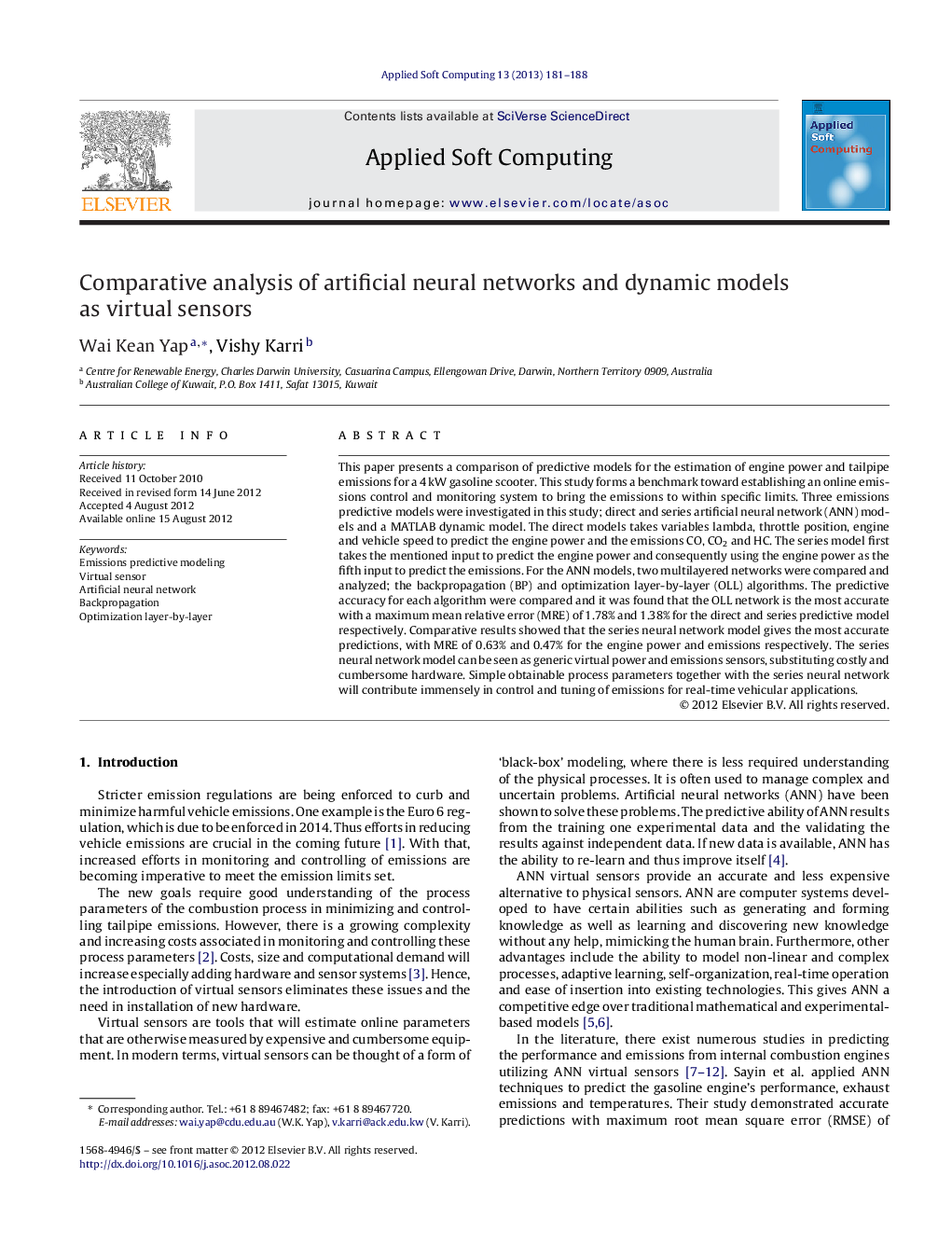| Article ID | Journal | Published Year | Pages | File Type |
|---|---|---|---|---|
| 495597 | Applied Soft Computing | 2013 | 8 Pages |
This paper presents a comparison of predictive models for the estimation of engine power and tailpipe emissions for a 4 kW gasoline scooter. This study forms a benchmark toward establishing an online emissions control and monitoring system to bring the emissions to within specific limits. Three emissions predictive models were investigated in this study; direct and series artificial neural network (ANN) models and a MATLAB dynamic model. The direct models takes variables lambda, throttle position, engine and vehicle speed to predict the engine power and the emissions CO, CO2 and HC. The series model first takes the mentioned input to predict the engine power and consequently using the engine power as the fifth input to predict the emissions. For the ANN models, two multilayered networks were compared and analyzed; the backpropagation (BP) and optimization layer-by-layer (OLL) algorithms. The predictive accuracy for each algorithm were compared and it was found that the OLL network is the most accurate with a maximum mean relative error (MRE) of 1.78% and 1.38% for the direct and series predictive model respectively. Comparative results showed that the series neural network model gives the most accurate predictions, with MRE of 0.63% and 0.47% for the engine power and emissions respectively. The series neural network model can be seen as generic virtual power and emissions sensors, substituting costly and cumbersome hardware. Simple obtainable process parameters together with the series neural network will contribute immensely in control and tuning of emissions for real-time vehicular applications.
Graphical abstractFigure optionsDownload full-size imageDownload as PowerPoint slideHighlight► This work demonstrates the use of ANN virtual sensors in predicting engine power and vehicle emissions. ► Simulation shows models are feasible and exhaust emissions can accurately predicted without additional sensors. ► Approach is generic and is applicable to other vehicular applications. ► Provides a basis for engine and emissions control and monitoring.
